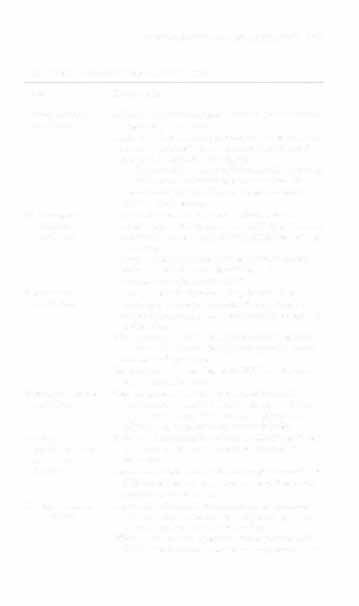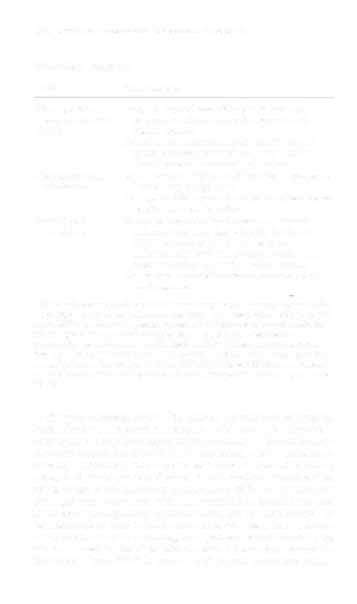i bc27f85be50b71b1 (256 page)
Read i bc27f85be50b71b1 Online
Authors: Unknown

Patient is allowed to breathe spontaneously through a
separate circuit between machine-delivered breaths.
Different from AV in that attempts ro breathe by the patient
are not assisted by the ventilaror.
Patient may "fight" the ventilator if patient tries [0 exhale
during the mechanical inspiratory phase, leading to
dyssynchrony; this mode has largely been abandonedreplaced by SIMY.
SIMV
Similar to IMV: Mandarory breaths are delivered with a
preset RR, Vpand flow; however, like AV, it will assist a
patient-initiated breath.
Mandarory breaths are only delivered when the patient is nor
initiating enough breaths ro allow a preset minute
venrilation.
Pressure
Patient-initiated breaths are augmented wirh a preset flow of
supponed
gas from the ventilator to maintain consrant inspirarory
ventilation
pressurej when the inspirarory flow drops to a preset value,
the flow of gas terminates.
Patient controls RR, inspiratory time, and flow; patient and
ventilator determine VT and minute ventilation.
The VT received from the machine is relared nor only to the
patient's effort but also to the amounr of pressure provided
by the ventilator.





818 ACUTE CARE HANDBOOK FOR PHYSICAL THERAI'ISTS
Table m-B.1. Continued
Modes
Characteristics
Continuous
Intended to decrease work of breaching by reducing the
positive
airway pressure necessary to generate inspiration
airway
throughout the respiratory cycle while the patient is
pressure
spontaneously breathing.
Positive pressure is constantly maintained above atmospheric pressure.
Most commonly used during weaning from the mechanical ventilator or in an artempt to postpone intubation
(can be delivered via an endotracheal tube or a specially
designed face mask, respectively).
Commonly used at night for the treatment of sleep apnea.
AV = assisted venrilation; CV = conrrolled venrilation; FlO: = fraction of inspired oxygen; l:E ratio = inspiratory rime to expiratory rime ratio; IMV = Intermittent mandatory ventilation; PEEP = positive end-expiratory pressure; RR = respiratory rate; SIMV =
synchronous IMV; VT = tidal volume.
Sources: Dara from P Marino. The ICU Book (2nd cd), Philadelphia: Lea & Febiger,
1998; AS Slutsky. Mechanical ventilation. American College of Chest Physicians' Consensus Conference Isee comments). Chest 1993; 104: 1833; and SF !-lowman. Mechanical ve'nrilation: a review and update for clinicians. Hospital Physician 1999;December: 26-36.
Ventilatory Settings
Ventilatory settings are parametets established ro provide the necessary support to meet the patient'S individual ventilarory and oxygenation needs."· Establishment of the ventilatory serrings is dependent on the patient'S (1) atrerial blood gas levels, (2) vital signs, (3) airway
ptessures, (4) lung volumes, and (5) pathophysiologic condition,
including the patient'S ability to spontaneously breathe."· Ventilator
serrings, subdivided into those that influence oxygenation and those
that influence ventilation, are presented in Table III-B.3.
Complications of Mechanical Ventilation
Auto Positive End-Expiratory Pressure
Auto positive end-expirarory pressure (PEEP) occurs when lung volumes fail to return ro functional residual capacity before the onset of the next inspiration. The process leading ro auro PEEP is referred ro


API'ENDIX [II-B: MECHANICAL VfNIlLATION
819
Table III-B.2. Alternative Modes of Ventilation
Mode
Characteristics
Pressure control
Delivers a preset airway pressure for a predetermined
ventilation
inspiratory time interval.
Inspiratory time is usually prolonged, and patients are
generally sedated because of discomfort due CO the
prolonged mechanical inspiration.
VT is determined by lung compliance; useful in cases in
which barotrauma is thought to exacerbate the
acute lung injury (ARDS); now also available in
ACV or SIMV modes.
High-frequency
A relatively rare technique of ventilation that is
oscilla.rion
administered with frequencies of 100-3,000 breaths
ventilation
per minute and consequently small tidal volumes of
1-3 ml/kg.
Primary advantage is dramatic reduction of airway
pressure and has shown beneficial results in
neonates and adults with ARDS.
Inverse rario
A rarely used technique involving the use of an
ventilation
inspiratory to expirarory ratio of morc than 1 ro 1;
can be delivered as a pressure-controlled or volumecycled mode.
The proposed benefit is the recruitment of a greatcr
number of lung units during the respiratory pause
and longer inspiration.
Potential risk of generating autO PEEP and dynamic
hyperinnation (see text).
Mandatory minute
Only set parameter is the minute ventilation; if
ventilation
spontaneous, unassisted breaths do not meet that
minute ventilation, the venrilator makes up the
difference by supplying mechanical breaths.
Noninvasive
Delivery of ACV, SIMV, and PSV modes of ventilation
positive pressure
via a nose or face mask to reduce the need for
ventilators
intubation.
(NIPPV)
Shown to be useful in reducing in-hospital mortality in
CO PO patients and long-term use in patients with
neuromuscular diseases.
Negative pressure
Exposes the chest wall to subatmospheric pressure
ventilators
during inspiration ro reduce intrapleural pressure,
thereby allowing air ro emer the lungs.
Efficacy has not been demonstrated in patients with
COPD and is unproven for acute respiratory failure.
